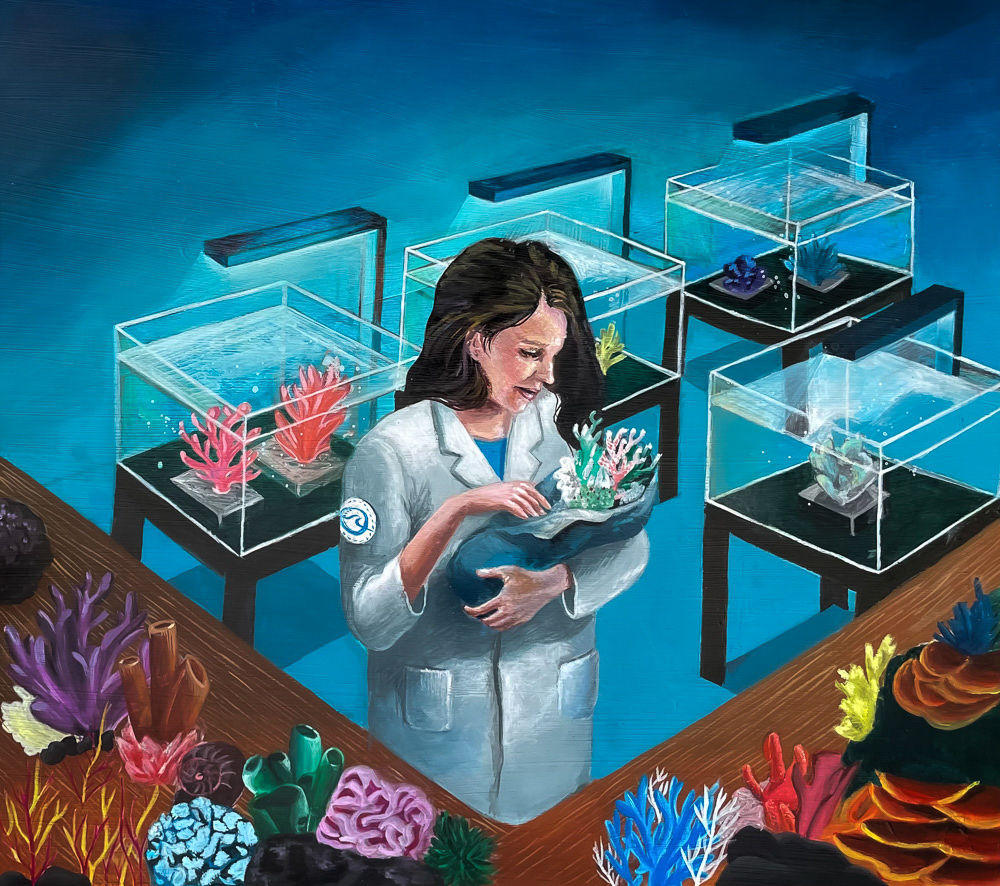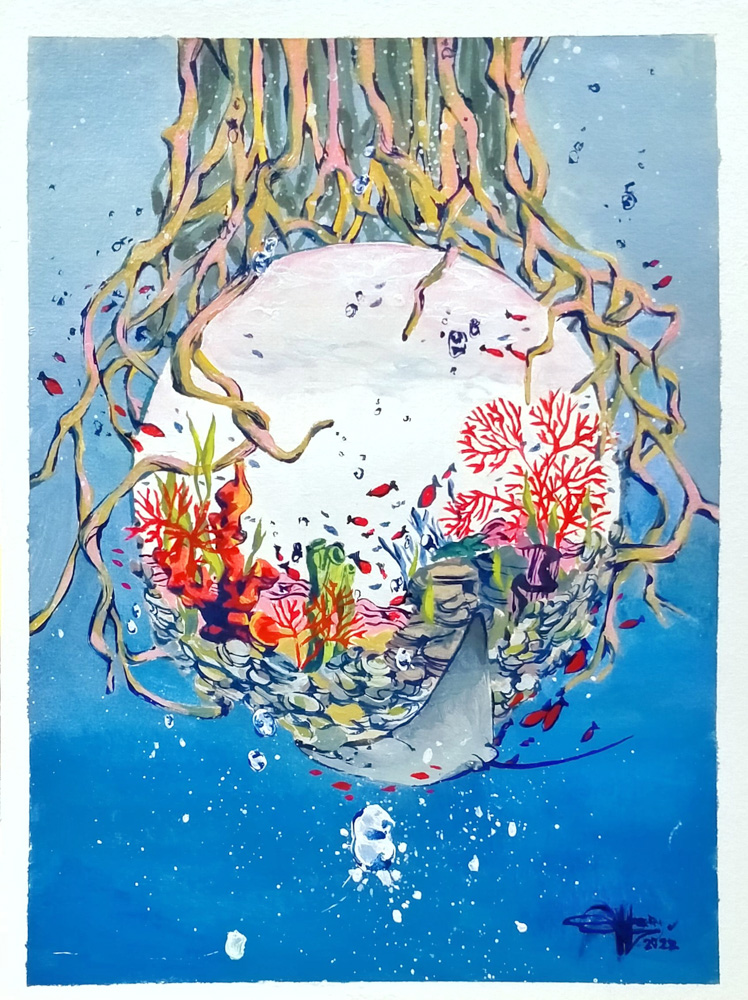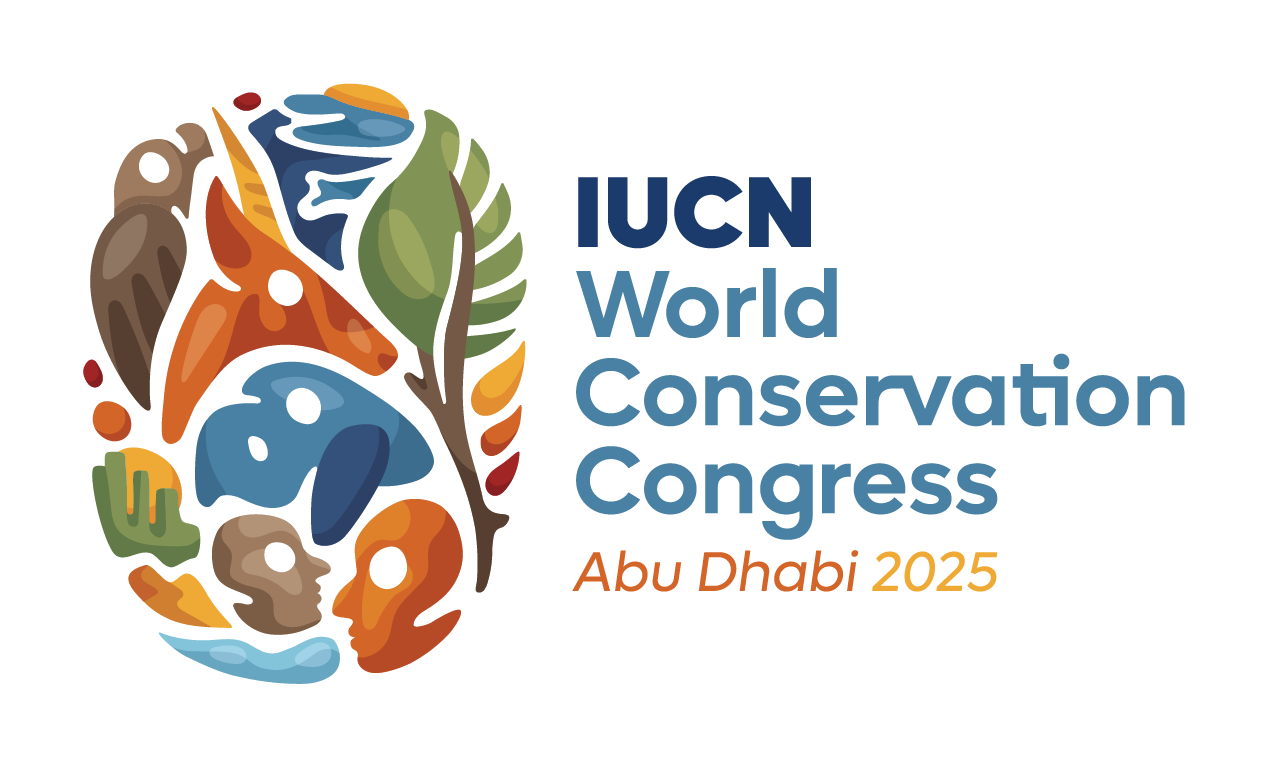Winners of the 2022 Science Without Borders® Challenge
The 2022 Science Without Borders® Challenge marked the tenth year of this international student art competition, inspiring young artists to learn about the ocean through creative expression. The theme, “Ridge to Reef,” encouraged students to explore the interconnectedness of land and sea, highlighting how actions taken throughout entire watersheds can influence the health of marine ecosystems, particularly coral reefs.
This competition introduced students around the world to the plight of coral reefs and encouraged them to learn more about what can be done locally to save this critical marine ecosystem. With over 500 entries from nearly 50 countries, the competition showcased the diverse perspectives and artistic talents of students from around the world. Their artwork vividly illustrated how protecting forests, reducing pollution, and managing land use can have profound effects on coral reefs far downstream. From reforestation efforts to sustainable agricultural practices, these young artists captured the essence of ridge-to-reef conservation and its critical role in safeguarding marine biodiversity.
The winning entries stood out not only for their aesthetic appeal but also for their compelling narratives about the symbiotic relationship between terrestrial and marine environments. Each piece serves as a testament to the power of art in raising awareness and inspiring action, reminding us that protecting coral reefs begins long before the water reaches the shore. We are proud to present the 2022 Challenge winners, whose art advocates for a holistic approach to conservation that bridges the gap from ridge to reef.
Winners & Finalists Ages 11-14:
First Place (11-14): "Coral Reef in the Bosom of their Mother" by Hyobin Pyo, Age 12, New Jersey, United States of America
ARTIST'S STATEMENT: Coral reefs provide a home for diverse creatures in the ocean. However, because of pollution and climate change caused by humans, coral reefs are disappearing rapidly.Many creatures are losing their habitats and hiding places from their predators. Scientists are researching and studying how to breed corals in laboratories to find the right environment for them to flourish. In the painting, a scientist is portrayed as a mother nurturing a baby. She has her child (baby corals) in her arm and is gingerly touching the coral with the hope of giving it a better future. Baby corals, in water tanks, are under lights in a protected environment. The table in front of the mother has corals that were successfully bred and are ready to restore the natural habitat for many creatures in need. We need to work together to save the ocean’s treasure, as it can save us all in return.
Winners & Finalists Ages 15-19:
"Sanctuary" by Charissa Laurelia Nadine, Age 15, Indonesia
ARTIST’S STATEMENT: Mangroves are one of the most well known planet saving trees that can play a big role in saving coral reef ecosystems with its complex root system that filters nitrates, phosphates and other pollutants from the water. Not only that, it also prevents erosion, effectively improving the quality of water flowing from rivers and streams into marine environment.




